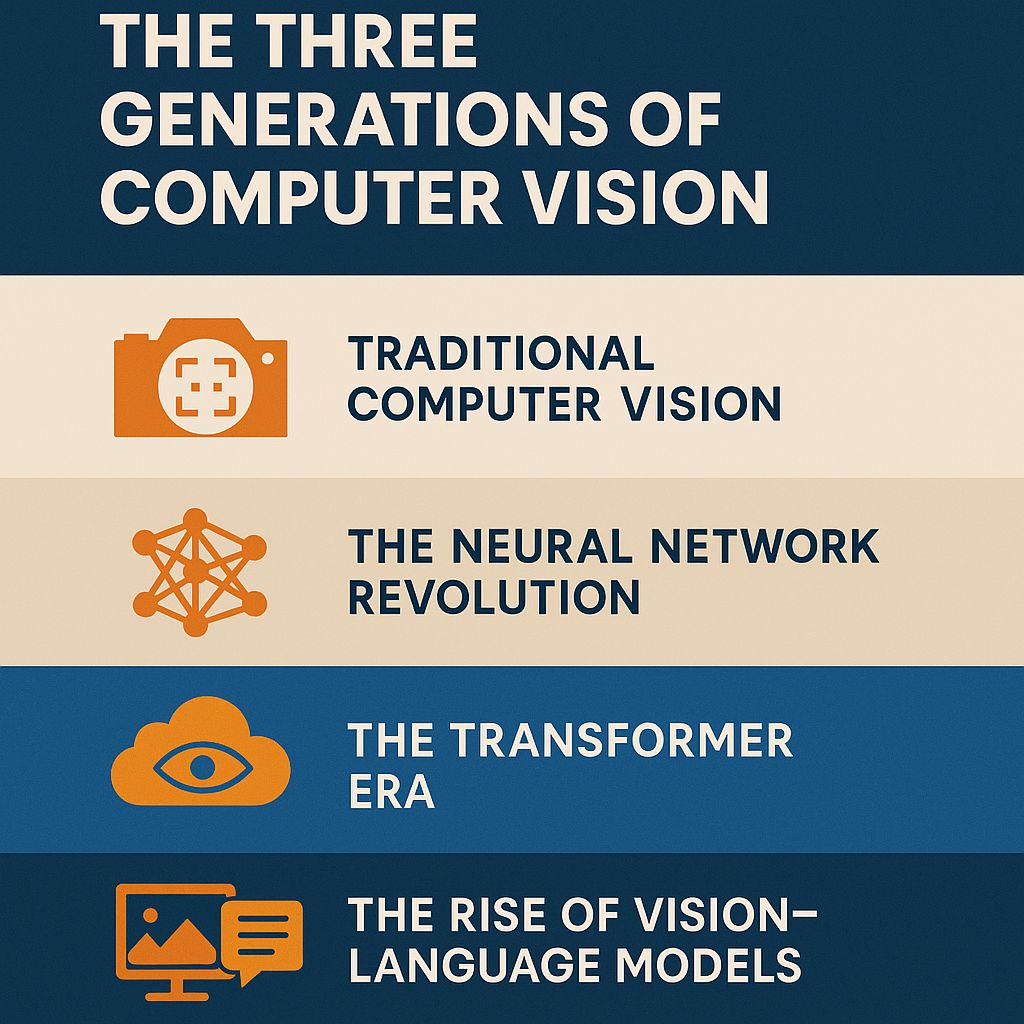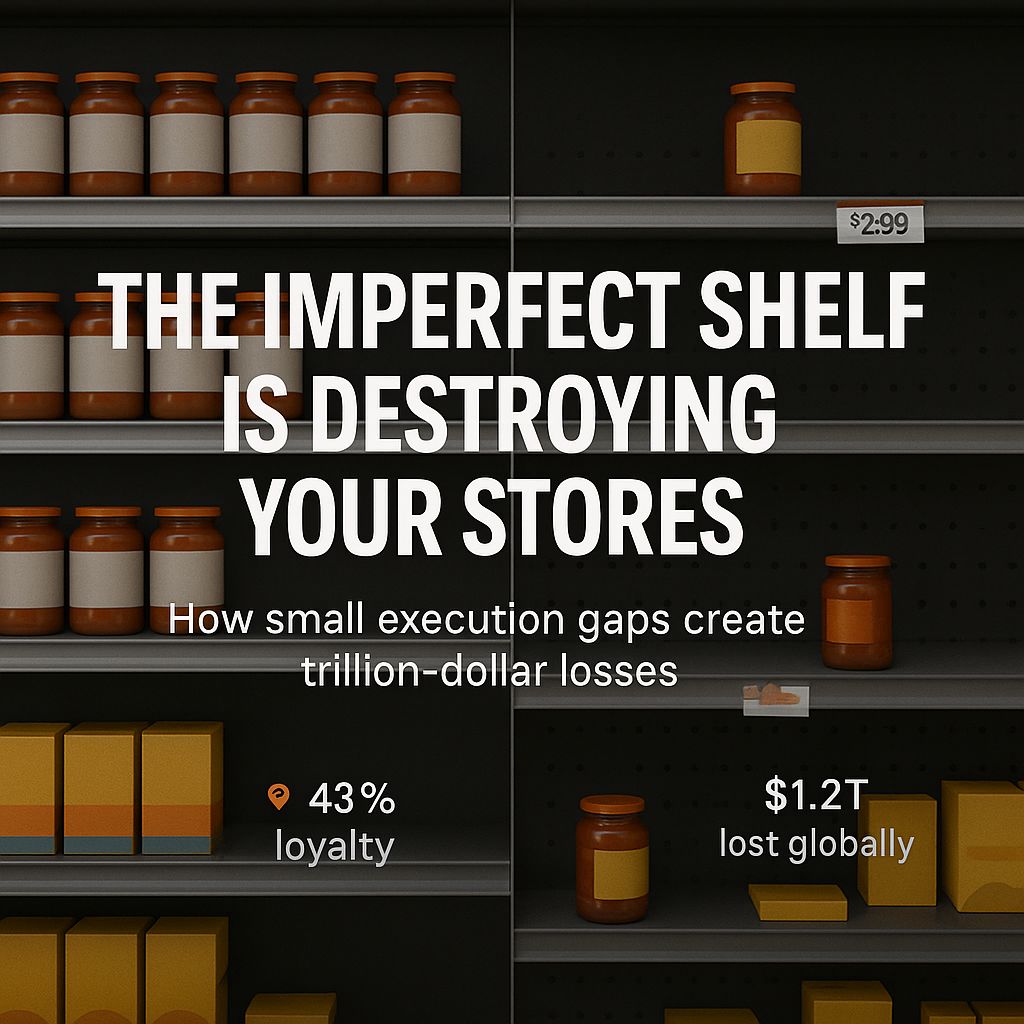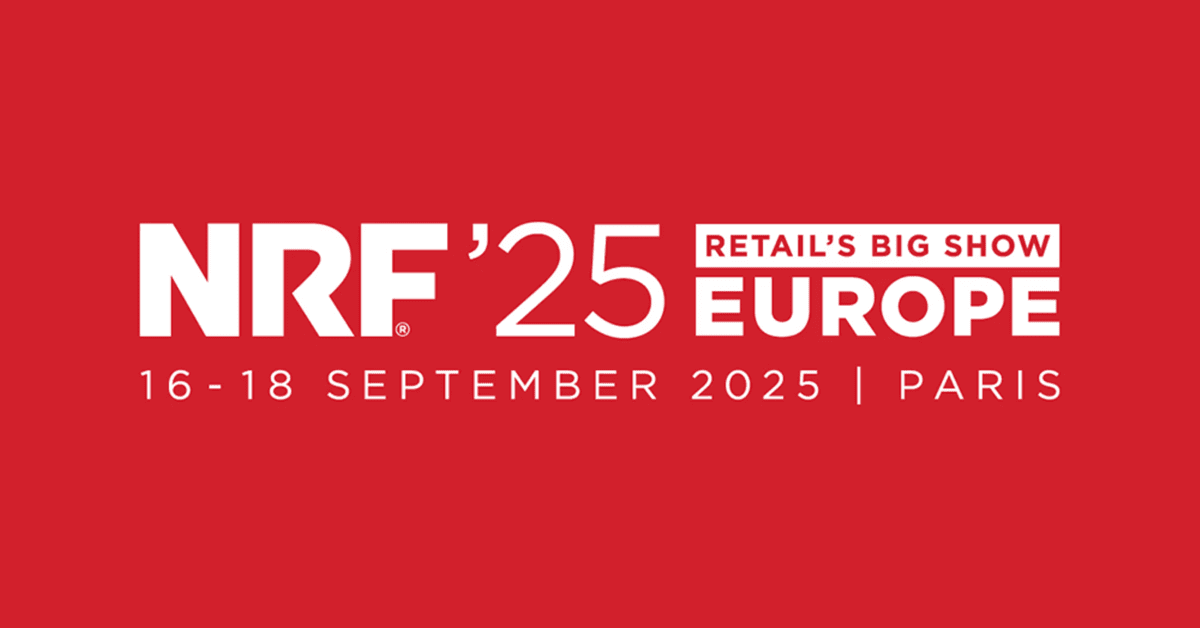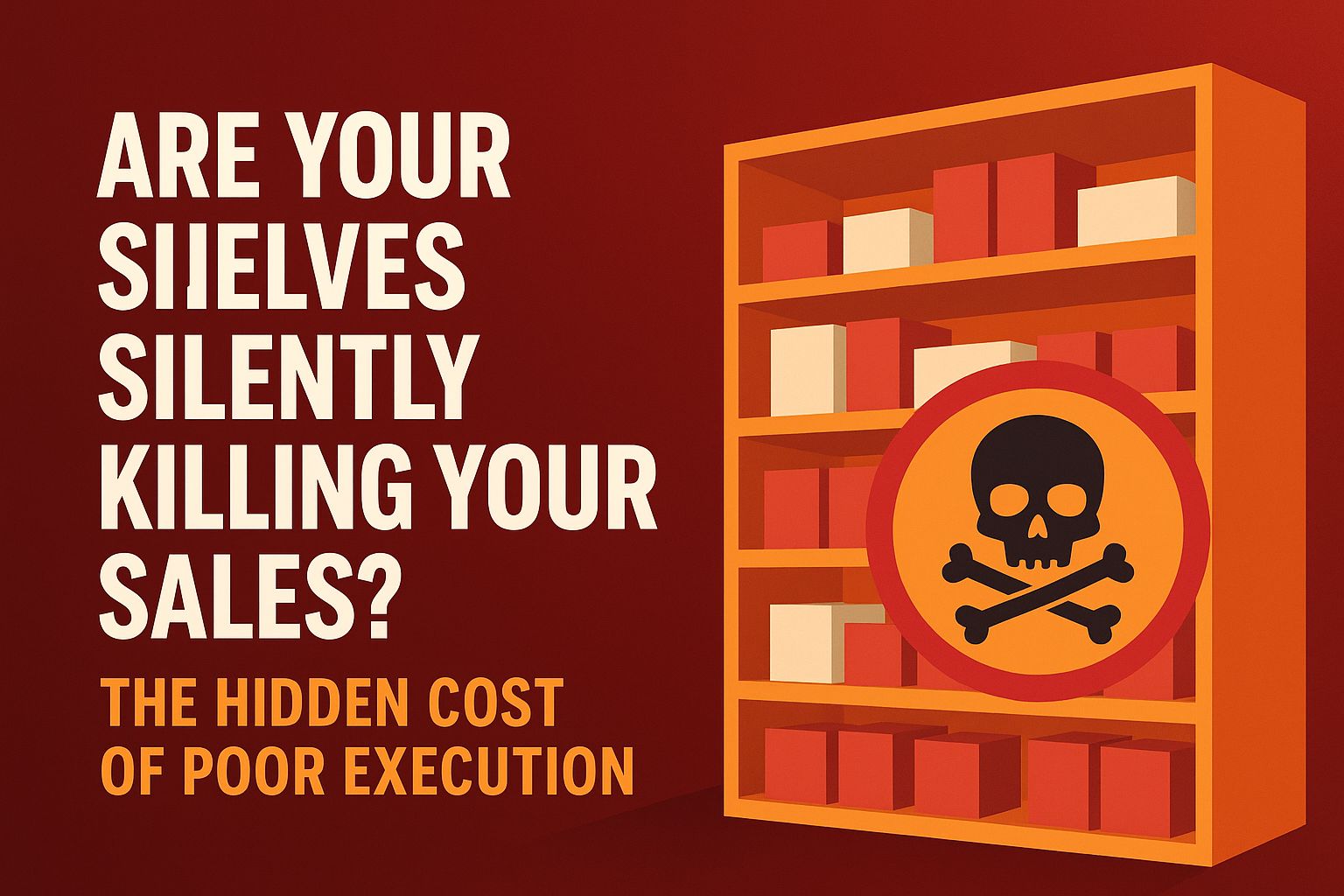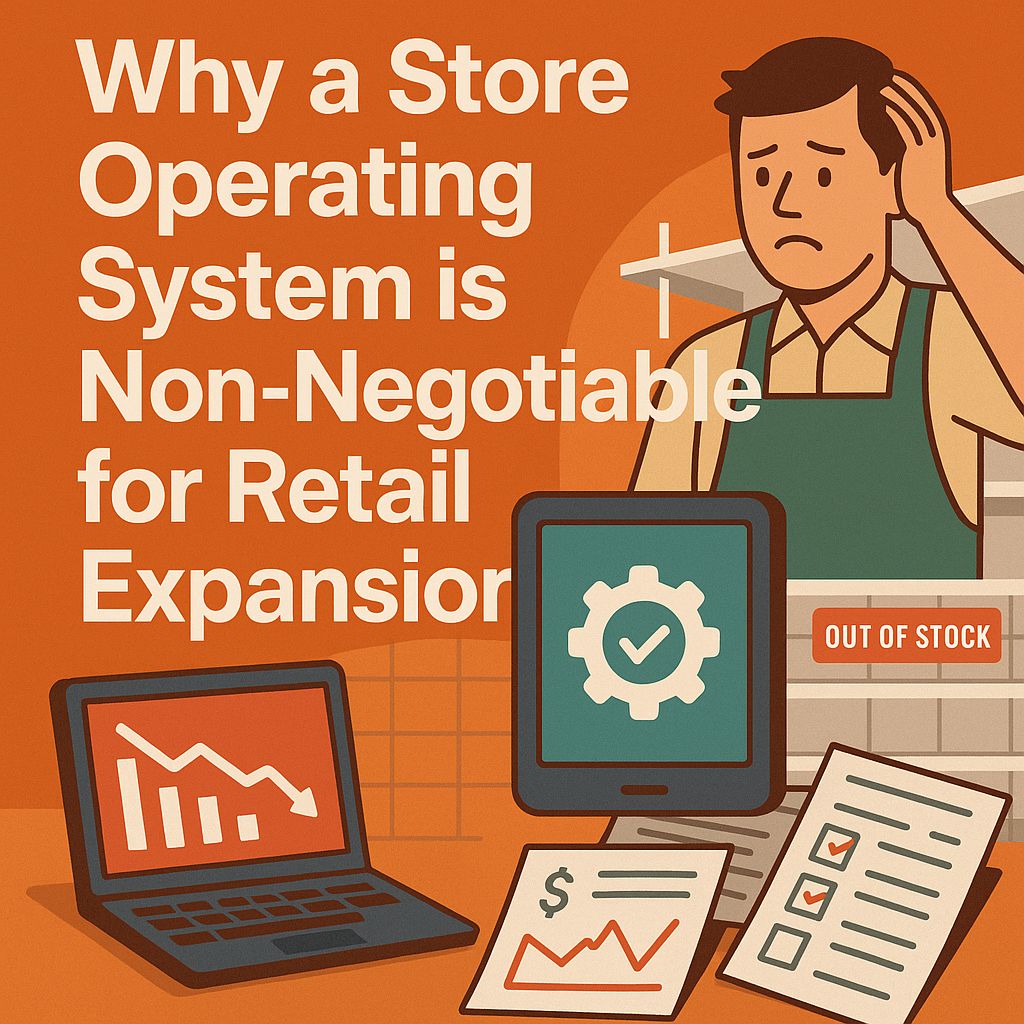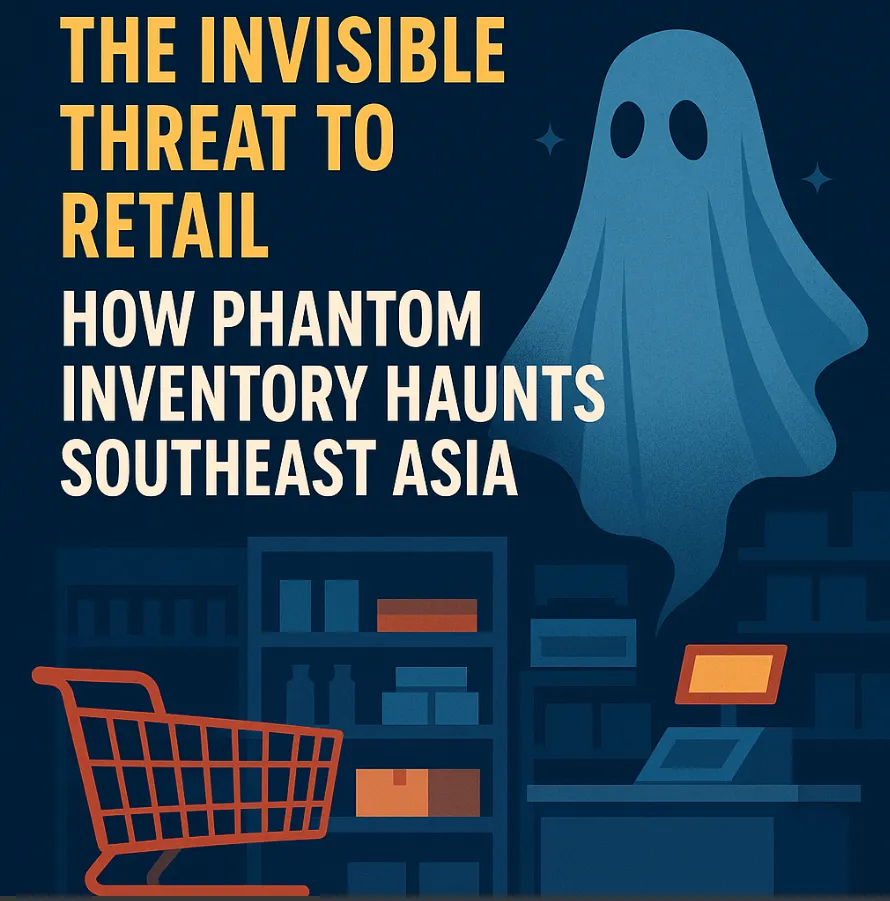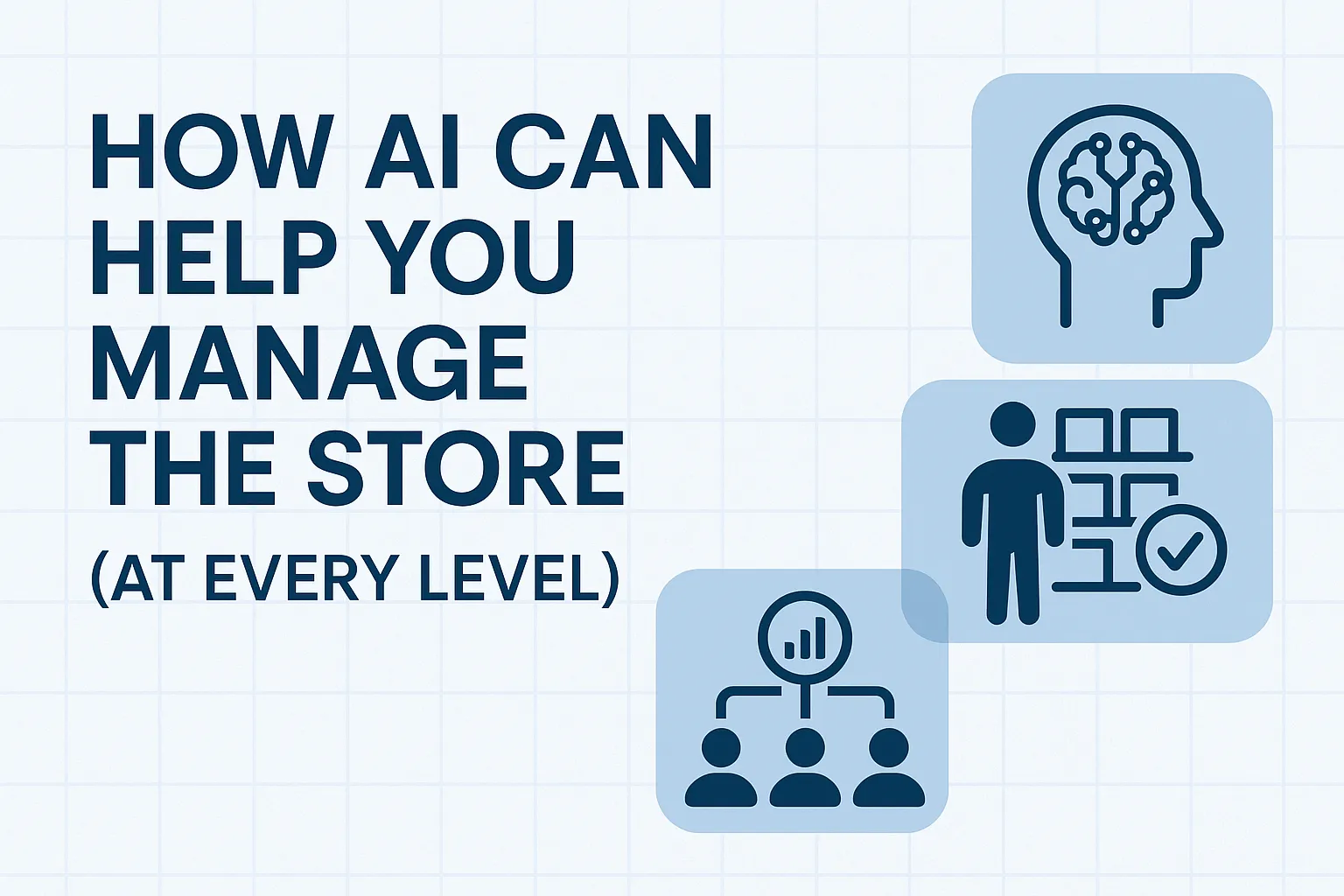Retail
The OmniShelf Store Operating System: Redefining Retail Execution with Edge AI
Discover how the OmniShelf StoreOS unifies operations, marketing, inventory, and data to eliminate retail blind spots and improve execution across every store.
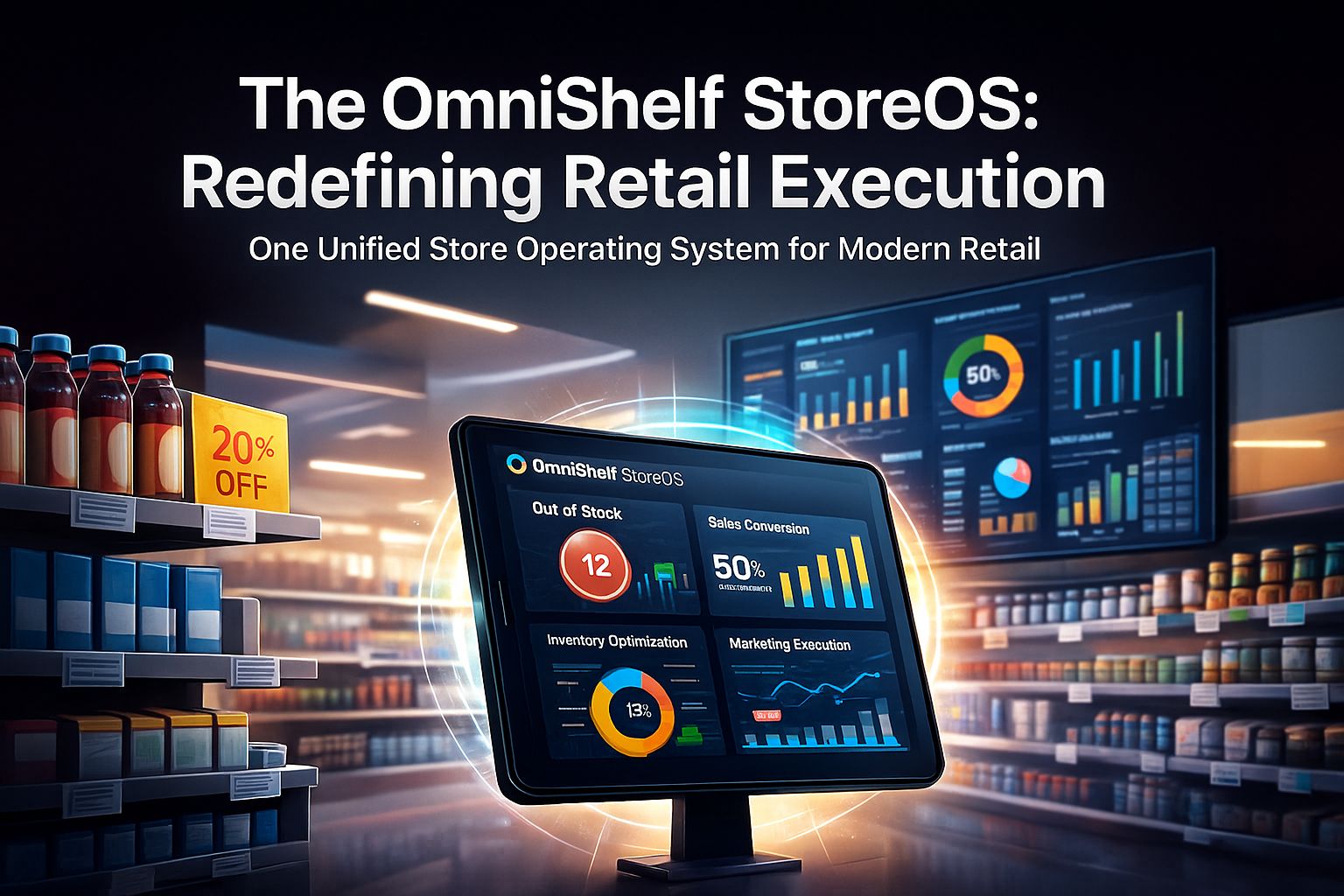
Reading Time
0 Minutes
Table of Contents
Expand
Authored By

Lukasz Piotrowski
CEO & Founder
Retail technology has long suffered from fragmentation. Despite a proliferation of cameras, dashboards, and analytics tools promising comprehensive visibility, stores still grapple with fundamental operational issues: empty shelves, inaccurate inventory, and failed promotions.
At OmniShelf, we recognized the need for a radical shift. Instead of introducing another layer of AI or a standalone reporting tool, we rebuilt the foundation by creating the complete Store Operating System—OmniShelf StoreOS.
This modular framework is designed to end siloed thinking by integrating operations, marketing, inventory, and data into a single, cohesive flow.
Your retail operations are fundamentally unified, and your underlying systems should finally reflect that reality.
Execution Over Auditing
The retail sector frequently emphasizes compliance and auditing. However, compliance audits alone do not drive sales—execution does. A store that is perfectly audited but lacks the correct merchandise on the right shelf will underperform due to poor planogram adherence and low stock availability.
This is precisely why OmniShelf is designed to ensure a real-time closed loop among planning, action, and verification. When marketing and operational execution are synchronized, data accuracy naturally improves. This shift allows you to address the core reasons for poor performance instead of just treating the symptoms.
Effective, real-time shelf execution, when paired with accurate pricing, dependable product availability, and optimal placement, is proven to boost commercial results. These elements are the bedrock of retail success.
By consolidating operations, marketing, inventory optimization, and data prioritization into a single Store Operating System, retailers can transition from using disparate tools to employing a unified execution engine.
OmniShelf: Much More Than Just Image Recognition
When introduced to OmniShelf, a common initial reaction is, "We've seen this. Is it just another image recognition tool?"
The answer is no. While OmniShelf utilizes a powerful edge computing AI engine—which works offline—for recognizing goods on the shelf, this is merely the foundational step toward achieving a perfect shelf. Image recognition is only one component.
The OmniShelf StoreOS integrates four distinct functionalities that work in concert to significantly enhance and drive measurable retail execution.
1. Operational Execution
Enhancing Store Shelf Execution for Revenue Optimization
Effective operational execution is crucial for minimizing the disparity between planned inventory and actual product presence on the shelf. Key components of this execution include:
- Out-of-stock detection
- Planogram compliance
- Shelf fill rate optimization
- Addressing underutilized space
The focus extends beyond mere compliance reporting, which only identifies issues. The objective of execution management is to proactively ensure problems do not recur.
Industry analysis indicates that deficiencies in shelf execution and stock-outs contribute to substantial revenue losses—estimated at 20% to 25% across major retail categories. These losses frequently stem from delayed problem identification or a lack of real-time corrective tools for store personnel.
Implementing a real-time operational execution layer allows retailers to transition from simply detecting issues to resolving them instantly. Historically, correcting a display has been a highly manual process, often requiring employees to consult printed planograms for guidance. With a solution like OmniShelf, store associates are equipped with a direct, guided tool that streamlines every step required to achieve a perfect shelf.
2. Marketing Execution
The Shelf: The Crucial First Point of Sale
Effective in-store marketing execution is vital for sales and customer satisfaction. The shelf is where purchasing decisions are made.
The Cost of Poor Execution
A missing price tag, a misplaced wobbler, or an empty promotional stand does more than just look bad; it directly impacts conversion rates. Our audits of major retailers reveal that 50 percent of all Point of Sale (POS) materials are either misused or missing, meaning every single lapse represents a lost sales opportunity.
Retailers often focus on compliance—was the display installed? The more critical question is one of execution: Did the display successfully influence shopper behaviour as intended?
Studies indicate that poor execution of retail marketing materials can lead to an up to 25 percent loss in sales, even when campaigns are fully funded and properly planned. When customers encounter confusion over prices or promotions, they frequently choose to leave without making a purchase.
Furthermore, ensuring correct POS placement is incredibly time-consuming for employees, as a single shelf section can contain a hundred different tags or promotional displays.
Driving Sales Through Execution
Marketing execution is about guaranteeing that every element—from the price tag to the shelf talker and the marketing display—performs its intended role: to drive the impulse to buy.
3. Inventory Optimisation
The Root Cause of Out-of-Stock: Flawed Inventory Data
Out-of-stock situations are merely symptoms of a deeper, systemic issue: inaccurate inventory data.
This poor data quality initiates a chain reaction of problems, including:
- Phantom inventory: Stock that the system believes exists but is physically absent.
- Incorrect planograms: Shelf layouts that do not match actual dimensions.
- Delayed replenishment: Slow response to stock depletion.
Collectively, these errors cripple product availability and suppress sales.
OmniShelf StoreOS: The Solution for Core Data Accuracy
OmniShelf StoreOS directly addresses these fundamental data discrepancies by enabling:
- Regular cycle counts: To systematically eliminate phantom stock errors.
- Store-specific planograms: Ensuring layouts precisely reflect actual shelf configurations.
- Assortment optimization: Aligning product selection with the unique demographics of the local community cluster.
The Significant Impact of Accurate Data
The current state of inventory data—particularly the manual, low-priority process of gathering shelf information—introduces errors that permeate the supply chain and forecasting models. This costs retailers billions annually in lost revenue from improperly stocked shelves (both under- and over-stocked).
However, the upside of correcting this is substantial. Research demonstrates that resolving negative inventory record inaccuracy—where the system overestimates physical stock—yields an average 11% sales increase for the affected items.
When shelf information reliably reflects true consumer demand, replenishment evolves from a reactive process into an intelligent, data-driven one, ensuring the store's assortment perfectly serves the needs of its community.
4. Data Reselling and Prioritisation
Unlock Shelf Value with OmniShelf StoreOS
Retail shelf data represents a significant, often untapped, source of value for both retailers and brands.
OmniShelf provides brands with direct access to crucial shelf-level insights, while enabling retailers to effectively monetize their operational data. Approximately 25% of the platform's value stems from raw data access; the remaining 75% is derived from prioritization. This means identifying the most impactful actions, pinpointing stores needing immediate attention, and determining which issues will generate the greatest commercial return.
Historically, gathering accurate, comprehensive shelf data has been a slow, costly, and inefficient process. Even with partial automation, it requires merchandisers to travel repeatedly to stores, making it virtually impossible to cover an entire retail chain's footprint effectively.
OmniShelf StoreOS changes this paradigm by making it possible to regularly and comprehensively collect shelf data. Our platform provides advanced shelf insights management, expertly transforming vast amounts of raw operational data into clear, high-value, and actionable tasks.
Together, the four core functionalities of OmniShelf StoreOS create an integrated ecosystem that empowers stores to execute operations faster, smarter, and with significantly fewer blind spots.
The Future of Store Execution
Retail faces an increasingly complex landscape: razor-thin margins, fierce competition, and soaring consumer expectations. Traditional reporting tools and fragmented systems are simply inadequate to manage this level of complexity.
OmniShelf StoreOS is not just another analytics layer; it is the foundational operating system for the store.
It offers:
- One platform.
- One source of truth.
- One shared execution model across all teams and partners.
The next evolution in retail technology isn't about proliferating dashboards; it's about better orchestration and unifying the actions that drive measurable, real-world outcomes.
Retail doesn't operate in silos, and neither should your systems.
Sources
- Retail TouchPoints. Driving Past Multi Billion Dollar In Store Blind Spots.
https://www.retailtouchpoints.com/blog/driving-past-multi-billion-dollar-in-store - Repsly. Poor Retail Execution Costs You Plenty.
https://www.repsly.com/blog/poor-retail-execution-cost-you-plenty - ArXiv. Inventory Record Inaccuracy and Its Impact on Retail Sales.
https://arxiv.org/abs/2506.05357 - ParallelDots. Real Time Shelf Execution Data for Ensuring Retail Store Compliance.
https://www.paralleldots.com/resources/blog/realtime-shelf-execution-data-for-ensuring-retail-store-compliance - REM People. The Impact of Poor Retail Execution on Sales.
https://rempeople.com/2023/04/10/4-cybersecurity-takeaways-from-chinas-largest-data-breach
About the author: Lukasz Piotrowski is the CEO of OmniShelf, a company dedicated to empowering retailers with innovative solutions for optimized shelf execution. With extensive experience in retail technology, he is passionate about helping businesses overcome operational challenges and drive profitability at the point of sale.
INSIGHTS & UPDATES
Explore More from the OmniShelf Blog
Stay ahead of the curve with deeper insights, product updates, and industry trends shaping the future of retail technology. Discover more stories that matter to your business.
